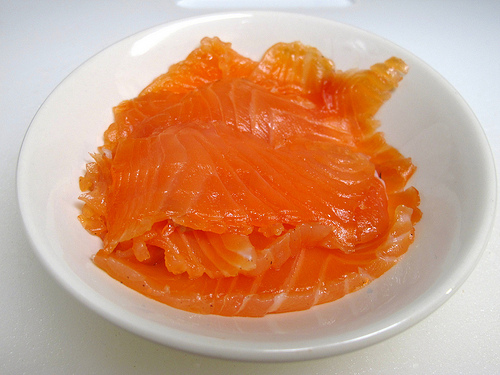
This scandinavian, special occasion, dish will melt in your mouth like butter.
Instructions
Gravlax
Place 2 large dill branches on the bottom of a deep glass dish. Place 1 piece of fish, skin side down on the dill. Mix salt, pepper and sugar together and rub half of the mixture into the flesh of the fish and top with 2 large bunches fresh dill. Rub the rest of the seasoning into the flesh of the other half of the fish and place it flesh side down over the fish in glass dish. Place remaining dill on fish. Wrap the whole thing in foil and put a cutting board on top and then a brick. Leave the fish in the frig for at least 48 hours. Turning every 12 hours. Scrape off al spices and the dill and clean with paper towels. Freeze for a couple of hours before slicing paper thin. Slice horizontally with a sharp filet knife. Serve with square black bread. Accompany with dill mustard sauce.
For the sauce
In a food processor mix mustard sugar and egg yolk. Slowly drizzle in the oil and process until thick. Add remaining ingredients and blend.
Recipe Notes
Recipe Notes Freezing the gravlax is important because it has to be nearly frozen in order to slice. 1 hour before you are ready to serve, remove the fish from the freezer, let it rest at room temperature 1 hour, then, using a filet knife, slice into paper-thin slices diagonally. This recipe is courtesy of Pim Kovach. During the Middle Ages, gravlax was made by fishermen, who salted the salmon and fermented it by burying it in the sand above the high-tide line. The word gravlax comes from the Scandinavian word grav, which literally means "grave" and lax (or laks), which means "salmon", thus gravlax means "buried salmon". Today fermentation is no longer used in the production process. Instead the salmon is "buried" in a dry marinade of salt, sugar, and dill, and cured for a few days. As the salmon cures, by the action of osmosis, the moisture turns the dry cure into a highly concentrated brine, which can be used in Scandinavian cooking as part of a sauce. This same method of curing can be used for any fatty fish. © Galley Chef All Rights Reserved
Restaurant Critiques and Recipes

